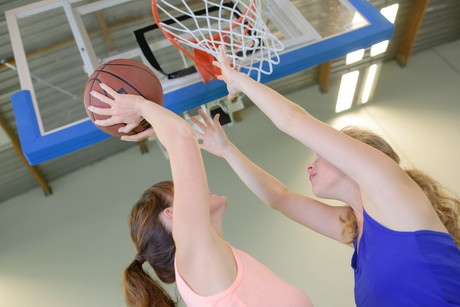Australia tops world for avoidable sports injuries

Despite being largely preventable, Australia has the highest reported rates of anterior cruciate ligament (ACL) sporting injuries and reconstructions in the world.
ACL is a sporting injury that typically leads to lifelong repercussions, including osteoarthritis. Over the past 15 years, the rate of reconstruction in Australians under 25 years of age has risen more than 70%, with the greatest increase among children under 14, according to research published in the Medical Journal of Australia.
Between July 2000 and June 2015, 197,557 primary ACL reconstructions were performed, according to research leader Associate Professor Christopher Vertullo, director of Knee Research Australia and chair of the Australian Orthopaedic Association Youth Sports Injury Prevention Initiative.
“The annual incidence increased by 43%, and by 74% among those under 25 years of age. In males, the peak incidence in 2014–15 was for 20- to 24-year-olds; for females, it was for 15- to 19-year-olds.
“Annual growth in incidence was greatest in the 5- to 14-year-old age group (boys, 7.7%; girls, 8.8%).
“Direct hospital costs of ACL reconstruction surgery in 2014–15 were estimated to be $142 million.”
Rupture of the ACL is a common injury that typically results from a non-contact event in which a previously healthy individual changes direction at speed while playing a multidirectional sport, such as AFL, rugby union, rugby league, netball, basketball or soccer, or skiing.
“The rise of ACL injury in young people has been attributed to earlier specialisation by younger athletes, longer sporting seasons, more intense training, higher level of competition and a lack of free play.
“The short-term consequences of ACL rupture include the inability to participate in sport, reconstructive surgery and prolonged rehabilitation. In the long term … almost all individuals who tear an ACL are at increased risk of osteoarthritis and disability, and this risk is substantially increased by concurrent meniscal injury.” While reconstruction has a high success rate, it doesn’t make the knee normal again.
Vertullo and colleagues highlight the fact that 20 years of research has shown that ACL injuries are preventable through regular neuromuscular agility training programs that could avert 50–80% of ACL injuries.
The authors emphasise that “prevention is much more cost-effective than either ACL reconstruction or rehabilitation. Establishing a national ACL injury prevention program has been reported as a cost-effective strategy for improving sporting health outcomes for young Australians.
“The increasing incidence of ACL injury in Australia is an emerging public health problem with potentially detrimental long-term health outcomes, especially for young people,” they concluded.
National concussion clinical guidelines now available
The first Australia- and New Zealand-specific guidelines for all forms of concussion — from...
Doctors criticise "risky prescribing agenda"
The AMA and RACGP have expressed disappointment in the Pharmacy Board of Australia's...
Free, nurse-led support line for primary liver cancer now open
October is Liver Cancer Awareness Month, and Liver Foundation has launched a free, nurse-led...


![[New Zealand] Transform from Security Awareness to a Security Culture: A Vital Shift for SMB Healthcare — Webinar](https://d1v1e13ebw3o15.cloudfront.net/data/89856/wfmedia_thumb/..jpg)
![[Australia] Transform from Security Awareness to a Security Culture: A Vital Shift for SMB Healthcare — Webinar](https://d1v1e13ebw3o15.cloudfront.net/data/89855/wfmedia_thumb/..jpg)




